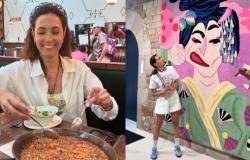Few words in the vocabulary of Japanese animation enthusiasts carry with them such a repulsive stigma as the term filler. The practice of dilating the narrative times with filler elements was a custom, especially for mammoth anime like Dragon Ball Z. And just recently the (canonical?) origin of the most famous filler of the series.
Generally, the unilateral insertion of unreleased episodes into the narrative corpus of an anime tends to be associated with the need of the producers of annual series (such as, for example, Dragon Ball) to do not cover the entire story material of the manga on which it is based, and thus respond to the needs of television broadcasters to broadcast, every single week, a segment of that specific serial product. And in pursuing such practices, the authors tend to codify, in complete autonomy, some original stories that act as a bridge between the saga just adapted and the one that is about to be transposed, or that act as a mere break between two episodes. This is a horizon in which the most famous filler of Dragon Ball Zbut from which it would seem, at least in part, to be abstracted: precisely because it would have been born from aillustration by Akira Toriyamaincluded in the original manga.
The episode in question, as many will have surmised, is number 125 of the series, precisely the segment in which Goku and Piccolo try to get their driver’s license, giving rise to outcomes that are as hilarious as they are laughable. If, in fact, the (numerous) complaints made by viewers regarding the anime filler content or the presence of downtime led to a reboot of the series (with the elimination of fillers which is one of the main differences that separate the anime Z from Dragon Ball Kai) it is also true that the episode in question immediately captured the attention of the viewers, so much so that it represents, in the eyes of fans, theemblem of all the instances, both negative and positive, that have marked the Toei-branded fillers.
It must be said that the illustration drawn by Toriyama (visible at the bottom of the news) was not conceived by the mangaka as subject of adaptation of a possible episode of the anime: in reverse. The sketch in which Goku and Piccolo are portrayed driving a car was inserted by Shueisha at the beginning of chapter 255 of the manga, in order to publicize (at the time) the release of the new weekly issue of the work. And inspired by drawing, the screenwriter Aya Matsui (the one who will conceive the story of GT) saw in the illustration the source on which to build the plot of the famous filler, so much so that in a brief shot of the episode we notice the young Gohan while he is leafing through a book containing a sketch extremely similar to the one drawn by the mangaka for chapter 255.
Although the question certainly does not make the filler canonical, it is clear that this episode, so openly “filler”, capable of summarize all the strategies pursued by Toei for this type of production, does not tarnish the legacy of Dragon Ball in the slightest. On the contrary: it contributes (paradoxically) to make immortal a mythology that has penetrated the collective imagination, also thanks to those “laughable” elements that have made it a reflection of the historical period where it came to life.
They are Jujutsu Kaisen. Showdown in the demonic desert of Shinjuku It is one of the best sellers today.





